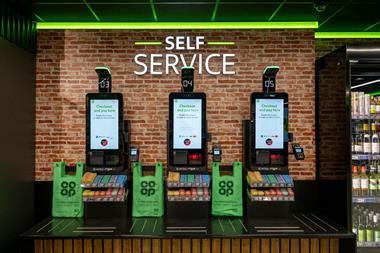Unstructured data holds endless possibilities, as retailers such as Macy’s are proving. Rebecca Thomson finds out why it’s worth using.

The term ‘unstructured data’ is likely to make most people glaze over. But while it might sound scarily technical, it’s worth paying attention – it holds big potential for retailers’ future growth and it’s a term that is becoming increasingly foolish to ignore.
It’s not difficult to understand either. Comprised of data such as the contents of emails, social network comments, written documents, product information, and phone calls, unstructured data is simply a giant mass of content that doesn’t fit neatly into a spreadsheet. Why is this interesting? Because of relatively recent developments in computing, this data can now be mined for common threads and trends. It opens up a world of information on customer opinions, trends and behaviour that wasn’t accessible before.
The amount of data held by retailers is mushrooming – Graham Cooke, managing director at data analysis company QuBit and a former ecommerce specialist at Google, says the amount of data held by retailers will grow 800% in the next five years. Between 70% and 80% of all data is unstructured, making it crucial that companies get an idea of how to manage it. “It’s getting out of control,” says Cooke. “It’s causing stress as people wonder how to tame this beast.”
James Murray, vice-president at data mining company Autonomy, which was bought by IT giant HP in August, says dealing with unstructured data isn’t just a chore to get out of the way – it can pay for itself by providing unprecedented in-depth insight about customers. Using complex algorithms, the technology makes it easier to attempt to scale mountains of information that were previously impossible to climb. “If you have 20,000 calls to a call centre you would need an army of people to sift through them and identify any trends,” he says. “Mining-based computing uses algorithms to do the same job.” The technology converts speech to text, which makes it possible to search, and a business can then identify key issues – for example, if there are problems with the website or if people are abandoning the online journey at a certain point. It means problems can be solved that weren’t even identified as problems before. A consistently high volume of calls to the call centre, for instance, might not even be noticed if there are no other figures to compare the information with. But using the right techniques to mine unstructured data, a retailer could discover that it’s because a certain part of the website doesn’t explain something very clearly – all the site needs is some basic re-writing, and money is saved.
The opportunities don’t stop at internal data. Facebook has suggested retailers should be linking the customer data they hold with social network information, saying the combination of retail data and social likes and dislikes could be a powerful thing.
Facebook head of commerce partnerships Gavin Sathianathan said at the World Retail Congress in September: “A lot of information sits on people’s Facebook profiles. Retailers have a lot of data on customers, and, at Facebook, we have information on how users interact with the world on a day-to-day basis. The challenge is how we meld the two together.” Certain methods of mining unstructured data can decipher the tone of an email as well, or the sentiment conveyed. It’s clear there’s plenty in it for retailers if they can get on top of the issue.
Cooke says the way to cope with the influx of data is to start building up layers of information, creating a structure that can then be processed into insight. Each layer could be something different, such as social network comments or the ways a user interacts with a website. “Once you have this grid, the information starts to become structured very quickly.” What’s important is to introduce a structure – information sitting in a database is not a great deal of use to anyone and tells you little about a customer’s experience.
Once the data is in a structured form where it can be used, the second stage is to aggregate and process it. Finally, retailers need to visualise what they want from the data, and get it into a state where an ordinary person can use it.
Many retailers are already using software that trawls social networks looking for people’s comments about them but few are using unstructured data to the extent that they could be according to Kate Ross, head of customer relationship management at BT Global Services. “The retailers that are interpreting this data and understanding the tone and sentiment are few and far between.”
Murray says retailers including Tesco, Sainsbury’s, Net-a-Porter and Debenhams have started to get some use out of unstructured data but that the industry as a whole has a lot to gain by processing it properly.
“At the moment, the industry looks out of the rear view mirror at what has happened in the past. Market research and surveys are all too static. Social media helps you form a picture and give a 360° view of the customer,” he says.
Every retailer’s data sets will hold something different. But as the amount of data retailers hold continues to grow, it makes sense to get something out of it – and the insight it’s possible to glean from this type of data is more in-depth than ever before.
How Macy’s is using unstructured data

US department store chain Macy’s uses Sas technology to track which store sales result from different online marketing methods, including its marketing emails. The technology gives it a good idea of which customers are responsive and which methods work, the retailer says.
It also produces data-rich reports using the software. Requests for different reports come in from all over the company and it used to take analysts between four and 12 hours to pull out the necessary data from various databases. The company is now saving half a million dollars a year in analyst costs having automated the process.
“We want to understand customer lifetime value,” says Kerem Tomak, vice-president of analytics for Macys.com. “We want to understand how long our customers have been with us, how often an email from us triggers a visit to our site. This helps us better understand who our best customers are and how engaged they are with us.” He says the software helps identify the most valuable customers, and produces the right promotions. “Customers share a lot of information with us – their likes and dislikes – and our task is to support them in return for their loyalty by providing them with what they want, instantly.”
Getting the most out of unstructured data
- The first step is to make the data structured, getting it into a state where it can be mined for information. Phone calls, for instance, can be converted into text and social network comments can be recorded in a consistent way
- The next step is to integrate the data sets if necessary, enabling them to be searched at the same time if needed
- As with all types of data, it’s only useful if you know what you want to do with it. Retailers need to know what they want to find out and then get it into a state that non-technical staff can understand and use it properly


























1 Reader's comment